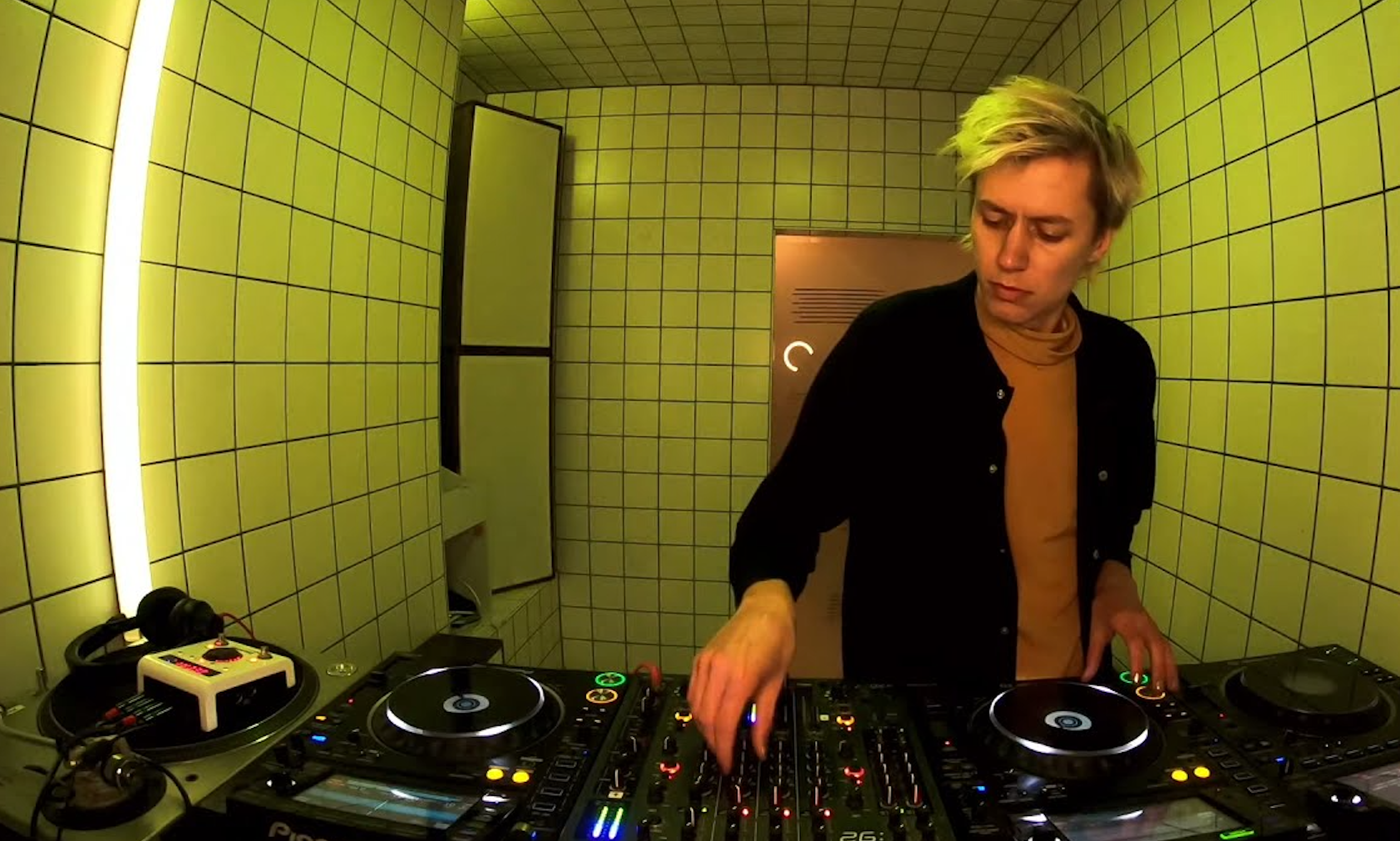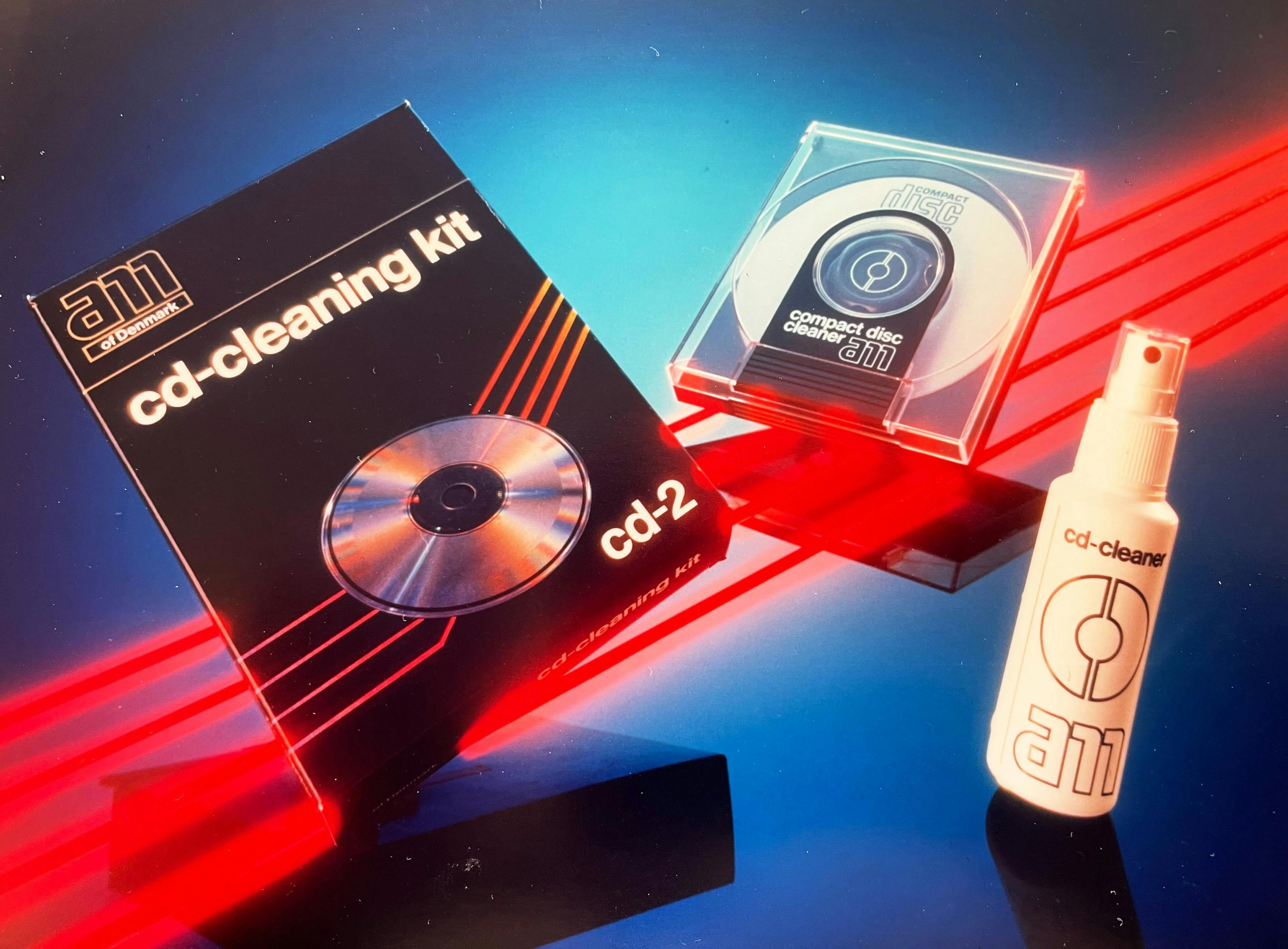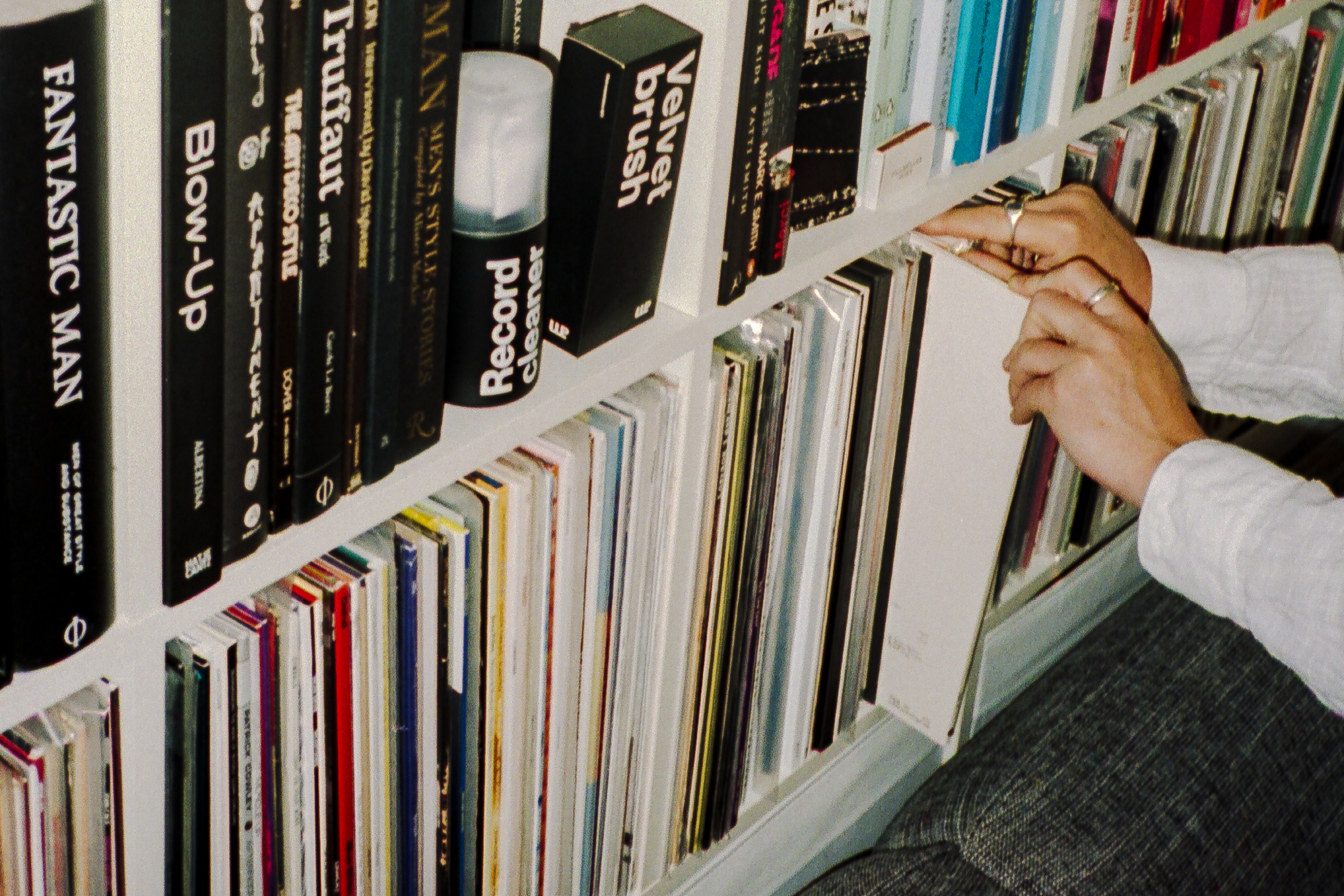Vinyl Creators - an interview with Andreas Vingaard from Frederiksberg Records
Firmly planted in the top tiers of reissuing, Copenhagen-rooted but Brooklyn-based Frederiksberg Records is a label dedicated to telling the stories of the most exceptional artists you probably never heard about. We sat down with the brains behind the operation, Andreas Vingaard, mediated by a patchy internet connection, to talk free jazz anecdotes, US Navy bases, and the future of reissue labels.
Text by Markus Kilsgaard
Photos courtesy of Andreas Vingaard
The year is 1969, and Danish tenor saxophonist Carsten Meinert has just released a high watermark in Danish jazz history. Over the course of 7 blistering tracks, Meinert and his bandmen, Henrik Hove (Bass), Ole Streenberg (Drums), and Ole Mathiessen (Piano), break the dominant mold of New Orleans-style swing and bebop that defined Danish jazz in the '60s. With a firm nod to the work done by his American forebears a few years earlier, Meinert spiritually awakens and propels Danish jazz into the avant-garde.
Despite its historical significance and the musical heft of the seven stunning tracks, "To You" quickly slipped into obscurity as jazz and music history branched off along other paths, only to live a quiet life on the shelves of a select few crate diggers. In other words, 'To You' had joined a cabinet of curiosities where supply never meets demand, and where a good-sounding copy climbs to astronomical figures on Discogs or eBay.
It wasn't until 2015 that the sonic shadows of "To You" were recast and reached out towards today's tentative ears through a beautiful reissue on the founded-for-the-purpose label Frederiksberg Records.
 Cover of Carsten Meinert Kvartet - To You (1969)
Cover of Carsten Meinert Kvartet - To You (1969)
Founder and sole proprietor Andreas Vingaard elaborates:
"I had been friends with Carsten (Meinert) for a while and felt a strong connection to the record when we first started talking about the idea of a reissue. It ended up taking almost three years to convince him of the idea of breathing new life into the record and about three more years to actually do the tedious work of remastering, researching, and writing the liner notes, locating photos, doing the cover, etc. In the meantime, we had put out another jazz record - a Finnish one. So by the time 'To You' came out, people saw FRB. as a jazz label even though we never envisioned it that way."
"On a more emotional level, Carsten's work with Spectator Records also served as a big source of inspiration to me. The label embodied DIY in every sense of the word, and through its relatively short lifespan, they helped artists - many of them from rural Denmark - with no means and no network to put out music that would otherwise never have seen the light of day."
 Portrait of Carsten Meinert
Portrait of Carsten Meinert
Since its formation, Frederiksberg has breathed new life into numerous records that have been bobbing along quietly on the vast ocean of music that is now trawlable thanks to YouTube and the likes. In contrast to other reissue labels that zero in on a particular genre, scene, or set of aesthetics (e.g., Habibi Funk, Stroom, or Music for Memory), Frederiksberg takes a more genre-agnostic approach driven by Vingaard's taste, love of storytelling, and coincidental human connection. Looking at the FRB. back-catalogue that spans releases of Virgin Island soca over Bermudan disco to kraut-styled early electronica, it's certainly hard to pigeonhole FRB. as a jazz label. And while most of the music reissued by the label is what could be considered vintage by some, longing for the past takes up little space when it comes to deciding what to reissue next.
"I never envisioned the label as a nostalgic project in the sense that I'm not releasing music to reminisce over the past or to say that things used to be better than they are now. A lot of the music I release is new to me and perhaps to many other people as well. Most FRB reissues can be approached in two ways - with two sets of ears, if you will.
The music has to sound fresh, summon some sort of bodily and cerebral pleasure, and it has to have an interesting story behind it. Not just to explore the story of an old record, but to broaden the scope of the conversation that surrounds it and reach out both backwards and forwards. These reissues are proof that old music need not be an artifact, that work which arose from earlier times can live and breathe with the same energy today."
The strong emphasis on storytelling and contextualizing is no coincidence, given Vingaard's training and main occupation as a video journalist. And with an increasing number of reissue labels facing criticism for profiteering and low-quality outputs, Frederiksberg Records certainly stands out when it comes to thoroughness and care for the artists.
"I was trained as a camera person and editor at DR (Danish Public Broadcast) and now work as a video journalist alongside my work on the label. But my way of working started in my early twenties, calling up artists and music people. I've always been driven to dig out information that I couldn't just read up on and hear stories from the horse's own mouth, so to speak. Perhaps it helped being young and naive - in the sense that I didn't think too much about whether I would come off as weird."
As our conversation meanders between musical history and big-picture thinking on the current state of the industry, Vingaard is at his most animated when talking about the artists he works with, revealing that he's most at home being behind the story rather than the center of one.
"The artists I work with have never been on the charts - perhaps a few concerts abroad - but otherwise, they more or less exist on the fringes of the music industry without lifetime achievement awards or platinum sales to their names. There's never a big label that mediates the process. So whenever I work on a reissue, it's always in collaboration with the artist or their families, which adds the human and emotional connection that fuels my motivation."
"And then there's the more nerdy and cosmic side to it, being able to untangle these bits of music history that are so deeply intertwined. Music, like any other form of art, all hangs together in one way or another, and understanding how seemingly small coincidences make ripples that end up defining pieces of art or entire genres tickles my brain in a pleasant way."
To prove his point, Vingaard fires off numerous anecdotes from the annals of musical obscurity. He points to the recent Milt Ward record he put out and how it would never have seen the light of day if it weren't for the accidental meetings centered around Berklee College of Music.
“The fact that those people met at that time at that place was the ignition for a record that is still relevant 40 years later.”
In a similar vein, the border trespassing power of music, pre-internet, becomes abundantly clear when he talks about how the radio station on the US Navy base in Asmara (now Eritrea) played a part in exposing local musicians to western genres like soul and country including the members of the band Admas who Vingaard worked with to re-release their half-forgotten cult-album Sons of Ethiopia. On the 1984 privately pressed and distributed album Admas draws from and rearranges “golden era” Ethiopian music with then-fairly-new synthesizer and drum-machine rhythms. Their multifaceted references shine through.
 Cover of Admas - Sons of Ethiopia (1984)
Cover of Admas - Sons of Ethiopia (1984)
Like your favourite 80s rock band, the vinyl format has found its feet again and gone on a world wide comeback tour, making it the fastest growing segment in music. (Although self-imposed danger is looming over the industry.) Combine these commercial facts with a retro zeitgeist, add in the unlimited opportunities for discovery on platforms like Discogs and sprinkle it with pandemic induced budget shifts and you have the perfect recipe for a booming market for ‘undiscovered’ music.
On one hand it’s hard not to applaud the fact that it’s never been easier to discover and buy forgotten, rarified music. But on the other hand, this proliferation seems to only widen the gap between how much the original artists made and how much collectors make in the secondary market decades later.
Given his part time occupation and full time passion Vingaard is right in the middle of this conflict. So it only seemed right to ask him about how he feels about being confronted with the commercial and economical logic of rare records and reissued grails.
“Most of the records I put out were originally pressed in really small numbers - usually due to the fact that the artists were completely independent and had to fund everything themselves. And with the world spanning market that exists due to marketplaces like Discogs, some of those records are very rare and valuable today. But the rarity and value in itself isn’t really a driving factor for me when deciding what to reissue. In fact, the reason why a lot of my releases happen to be of lesser-known records is down to the practical fact that it’s easier to reissue works that haven’t been released on a major label.
That’s not to say that I’m not drawn to the rarity of certain records on a personal level. I think that’s a very human thing.
Taking ‘ownership’ of certain works because I happen to have them in my collection is quite foreign to me. And sometimes I even get contacted by people that are slightly annoyed at me for re-releasing stuff that they’ve spent loads of money and time to get their hands on. I guess I can’t really see the benefit of music living only in the record shelves of a very select group of collectors or DJs.”
Behind the business model of most reissue labels lies an inconvenient truth; that at the current pace of digital discovery, maybe there aren’t that many ‘hidden gems’ left to discover. And with the recent volume growth of reissue labels it’s hard not to ask if we are reaching a saturation point some time soon?
“I think there’ll always be an appetite for ‘new, undiscovered’ music, but it’s true the volumes of records being pumped out is astonishing. It’s a spectacular time to be a music fan, everything you ever wanted to hear is available with a few clicks. And in certain niches like jazz, where a lot of work has been done already, the ‘supply’ is starting to dry up. I wouldn’t be surprised if in five years time there aren’t that many jazz records left to reissue that haven't been put out already. As far as jazz LPs go, there might only be 20-30 quality smaller label releases left untouched.”
As an example - while Vingaard worked on ‘Compass Rises’ (a very good record, but obscure nonetheless) five labels contacted the musicians to ask if they’d be interested in doing a re-release.
 Cover of Compass - Compass Rises (1973)
Cover of Compass - Compass Rises (1973)

Compass rehearsing (1972)
So if we extrapolate a little, could reissue labels be losing their inventory and therefore their relevance and economical foundation in a not too distant future? Will the need for re-issuing still exist for music in the digital, post internet era?
“Art - especially on the fringes - has a way of getting lost and forgotten for one reason or the other. Like - what happened to all the music on Myspace? Were the master files behind all of that put on a secure hard drive or were they left in a desktop folder of a long lost laptop? I believe that tracking down people, stories and original recordings in order to re-introduce them to a new audience will always be relevant. It might just be that the format changes.”
Which brings up the relation between format and artwork and the aesthetics implications of that relation. Much the same way that we’ve grown accustomed to some archive material in film being video8 or dv tape, maybe we’ll experience the same with mp3, in that it’s arguably the ‘native format’ of music from the Myspace era. And maybe that wouldn’t be such a bad thing, considering how resource intensive physical releases on vinyl are. It’s hard not to think about how many resources go into 180 gram vinyl, gatefolds, labels and OBI strips.
“I think the collector community will have to go through a mindset shift to also embrace more digital listening. And despite all the negative side-effects of streaming business models I’m also hugely optimistic and enthusiastic about how open younger generations of listeners are to all kinds of music, new and old. It seems to me that people today care much less about genre and time boundaries and much more about the music itself.”
As our conversation came to a close on this forward looking note it only seemed right to ask for a recommendation of a recent release that has caught his attention.
“Glass Lit Dreams by Dawuna came out last year and physical copies sold out almost instantly. It’s dark and dusted R&B laced with experimental electronics and definitely a record I’d love to have on my shelves. But being too late to cop I’m relegated to listening to it on Spotify. And that I’m totally contempt with”
To end things off and hopefully send you down new musical back-alleys, here are three of our favourite releases from the Frederiksberg catalogue.
The first solo album of still active Danish music pioneer Klaus Schønning is a serene walk through nature mediated by organs, electronics and white noise. With a vision to musically illustrate Denmark’s natural surroundings Schønning separated the record into two suites, Skoven (the Woods) and Stranden (the Shore), each completed with field recordings of birds and waves.
Despite her otherworldly voice and musical genius Susanne Menzel only has one record to her name. Stubborn in her artistic vision, Susanne was offered solo contracts with major labels that required her to work with producers and sing in Danish. But she resisted and insisted on her own distinct identity and vision. Hard to pin down on any time and location spectrum, Goodbyes and Beginnings combines airy folk vocals and naive but impactful lyrics with forward looking early electronics (by aforementioned Klaus Schønning) on a record that still sounds as fresh as when it came out in 1981.
Best filed under ‘Out of Category’, the ‘Stoned’ composition was originally created for a slideshow of sculptures by the late American photographer Stuart Fox and self-released in minuscule numbers in 1974. Perhaps most known outside Denmark for his score of Jørgen Leth's 1976 documentary A Sunday in Hell, Pedersen was recently celebrated with a 12-channel, day-long performance of 5 distinct pieces from his catalogue, here in Copenhagen.


